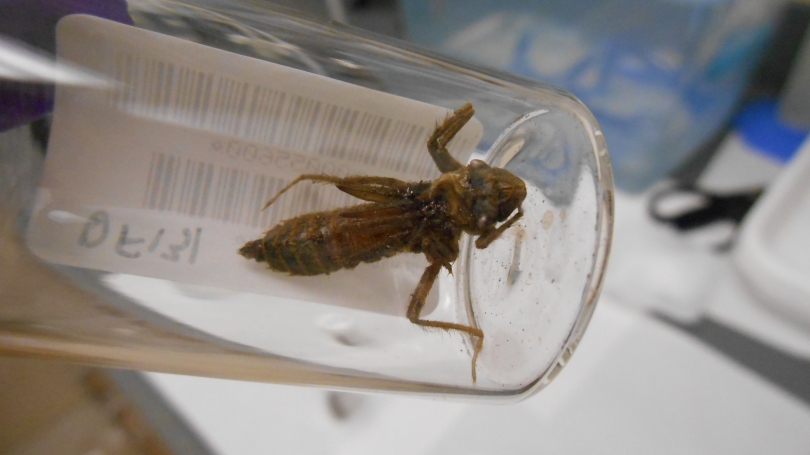By DAVID HIRSCH, Dartmouth News: A citizen science program that began over a decade ago has confirmed the use of dragonflies to measure mercury pollution, according to a study co-authored by Celia Chen, director of Dartmouth’s Toxic Metals Superfund Research Program.
Chen, a research professor in the Department of Biological Sciences, says the national research effort, which grew from a Dartmouth-affiliated regional project to collect dragonfly larvae, found that the young form of the insect predator can be used as a “biosentinel” to indicate the amount of mercury that is present in fish, amphibians, and birds.
The findings, published this month in Environmental Science & Technology, will make it easier to conduct mercury research and could lead to a national registry of pollution data on the toxic metal, Chen says.
“Researchers needed a proxy for fish since that is what people and animals eat,” says Chen. “Fish can be hard to work with for a national-level research program, so it’s helpful to be able to focus our research on dragonfly larvae.”
The study includes data from thousands of larval dragonfly specimens collected from nearly 500 locations across 100 sites within the U.S. National Park System. The survey was collected from 2009 through 2018 as part of the national Dragonfly Mercury Project.
“The support of citizen scientists around the country created the opportunity for this study to have such significance. This is a terrific example of how public outreach around science can bring results that help the entire country,” said Chen.
Kate Buckman, a research scientist who serves as Dartmouth’s coordinator for the citizen science program, added, “It is extremely rewarding to assist teachers and their students to engage in data-driven, real-world research impacting their communities. I see a lot of enthusiasm from students eager to take part in ‘real’ science.”
Through the decade-long study, the researchers found that about two-thirds of the aquatic sites studied within the national parks are polluted with moderate-to-extreme levels of mercury. Given that the parks studied stretch across the entire U.S., including Alaska and Hawaii, the findings reflect levels of mercury throughout the country.
“To date, we have not conducted such a broad scale survey on mercury in the U.S. The beauty of the dragonfly data set is that it is national, covers a huge area with different systems, and has the potential to create a national baseline of mercury pollution information,” said Chen.
The original project was launched by Sarah Nelson at the University of Maine and the Schoodic Institute in 2007. Dartmouth’s Toxic Metals Superfund Research Program developed a regional effort in New Hampshire and Vermont in 2010. The project was expanded nationally by the National Park Service and the U.S. Geological Survey.
The Dartmouth-led citizen science project in the Upper Valley region of New England typically runs in the fall, with participation from high school students in New Hampshire and Vermont.
Researchers from the USGS, National Park Service, University of Maine, Appalachian Mountain Club, and Dartmouth participated in this study.


 Return to the Concord Monitor
Return to the Concord Monitor